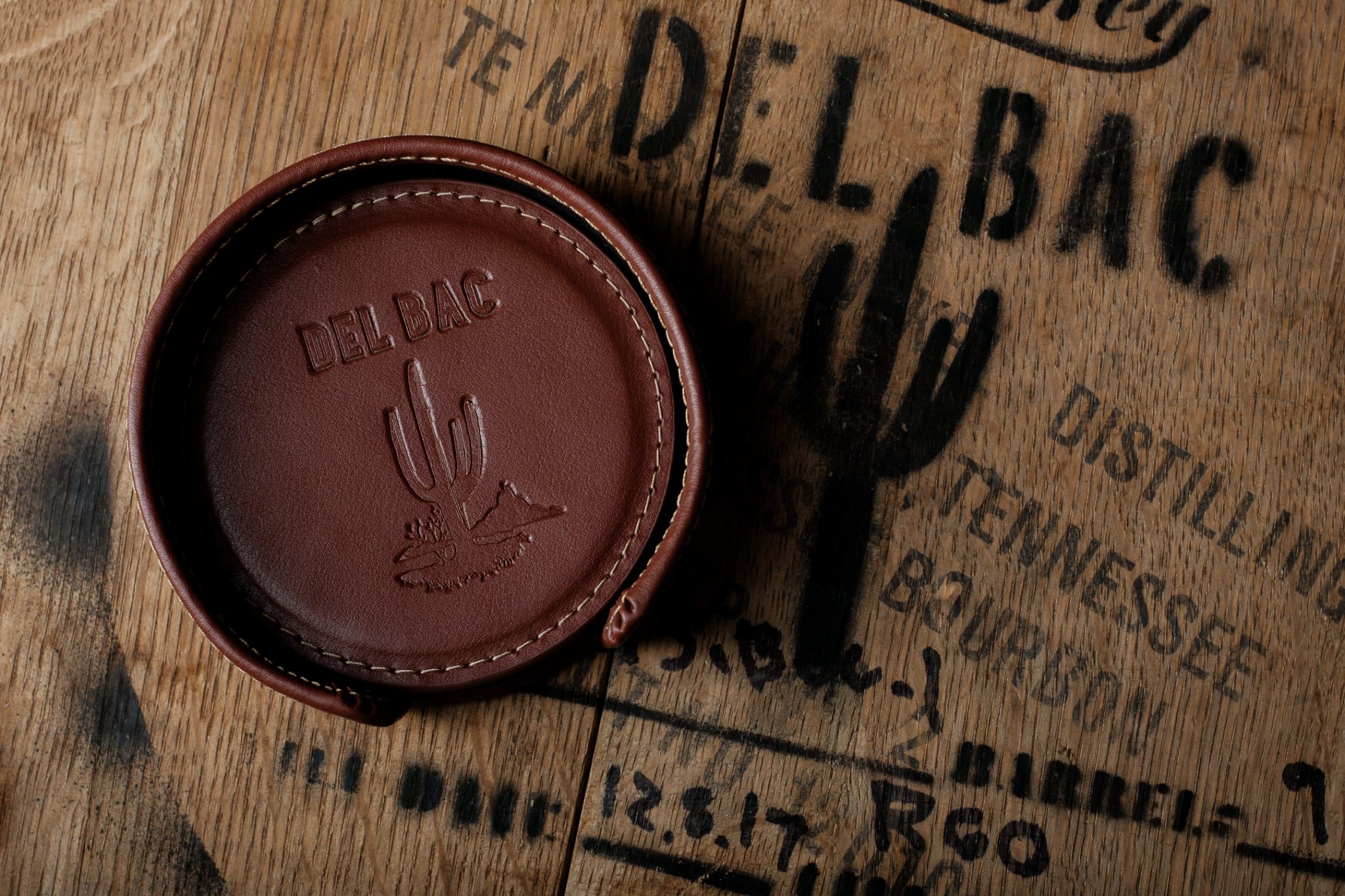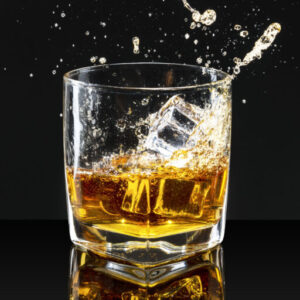Exploring the Frontier of American Single Malt
As the American Single Malt category continues to gain recognition, distilleries across the country are defining what this whiskey style means through their own regional influences and production techniques. One distillery at the forefront of this movement is Whiskey Del Bac, based in Tucson, Arizona. Led by Master Distiller and Blender Mark A. Vierthaler, the team at Whiskey Del Bac is crafting a distinctly Southwestern whiskey that showcases the terroir of the Sonoran Desert. Terroir refers to the unique combination of climate, geography, local ingredients, and even cultural practices that influence the flavor and character of a spirit.
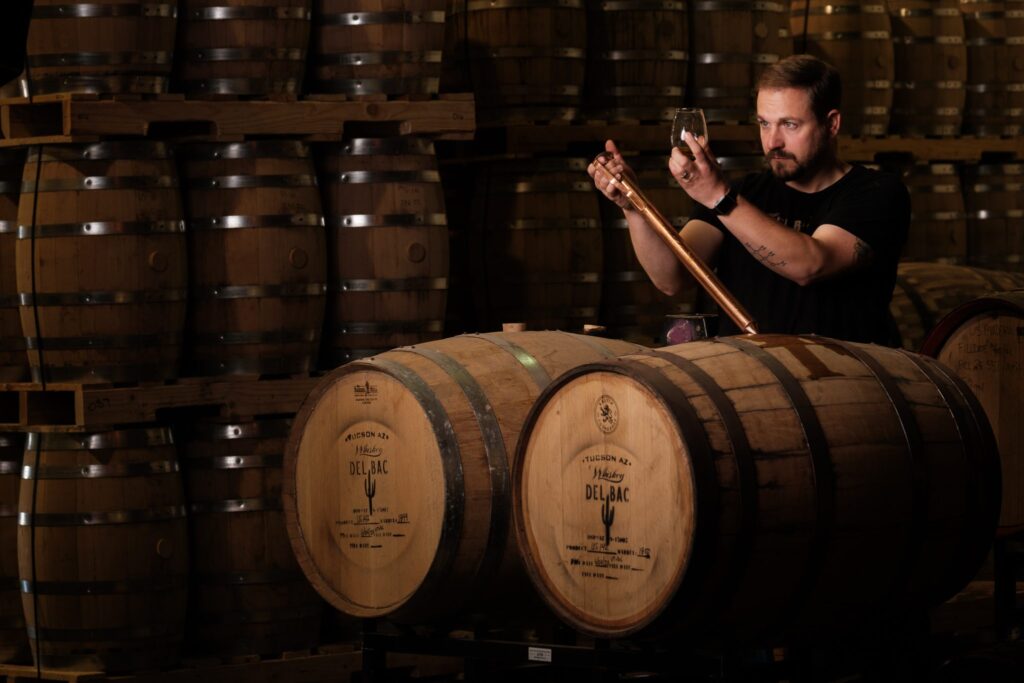
The Grain-to-Glass Process: Crafting a Whiskey of Place
At Whiskey Del Bac, the production process is deeply rooted in the Southwest, beginning with barley sourced from southern Colorado. Unlike many distilleries that rely on third-party maltsters, Whiskey Del Bac produces its mesquited—not peated—malt in-house. This hands-on approach allows them to control the entire malting process, from steeping and germination, to smoking and kilning, ensuring that every step contributes to the whiskey’s unique desert-driven flavor.
“We do every step of the malting process in-house,” said Vierthaler. “For our American Single Malts, we handle milling, mashing, fermentation, distillation, aging, blending, and bottling on-site. This gives us as much control as possible over the final product that makes it into our customers’ glasses.”

A Mash Bill Inspired by the Sonoran Desert
Whiskey Del Bac offers three mash bills that emphasize their commitment to terroir: 100% unsmoked malt, a 60/40 split of unsmoked and mesquite-smoked malt, and 100% mesquite-smoked malt. The choice to incorporate mesquite smoke rather than peat was intentional, creating a whiskey that embodies the spirit of the Southwest.
“Mesquite is part and parcel of the desert,” Vierthaler said. “The flavor and scent it lends means that when you sip Whiskey Del Bac, you are sipping the Sonoran Desert.”
Fermentation: Embracing the Desert’s Challenges
Fermentation in the harsh Arizona climate presents unique challenges, but Whiskey Del Bac has developed a process that embraces the conditions rather than fighting against them. The distillery pitches its yeast at 85°F, allowing it to ferment at that temperature for the first 24 hours before lowering it to 80°F for the remainder of the process. This warm fermentation produces esters that result in tropical fruit notes, such as banana and mango, in the final spirit.
“These warmer fermentation temperatures create lovely ester profiles that translate into tropical notes in our finished product, underlined by the sweetness of the mesquite smoke,” said Vierthaler.
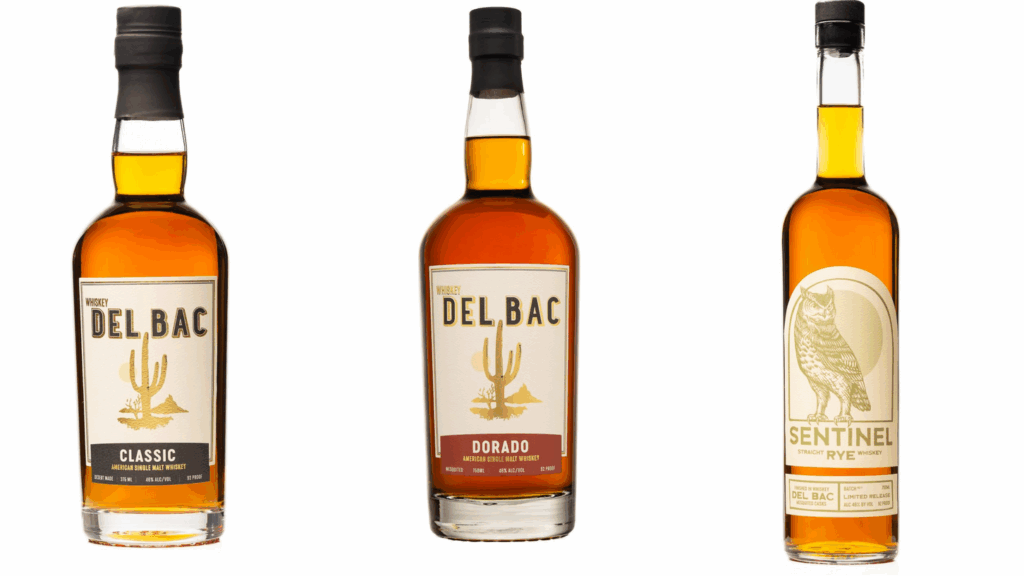
Distillation: Narrow Cuts for Bold Character
The distillation process at Whiskey Del Bac follows a Scottish model, utilizing double copper pot distillation. However, due to the extreme aging conditions, the distillery makes particularly narrow cuts to ensure that only the most refined flavors make it into the barrel. Narrow cuts refer to selecting a smaller portion of the distillate, the “heart,” while discarding more of the early (heads) and late (tails) runnings, which can contain harsher or less desirable compounds.
“We make incredibly narrow cuts during production, as we are almost exclusively using quarter casks (15-gallon barrels) for our initial aging,” Vierthaler said.“Because of our climate, we don’t have time for wider cuts to oxidize and esterify.”
Barrel Aging: Harnessing the Power of the Desert Climate
Aging whiskey in the Arizona desert comes with its own set of challenges and advantages. The dramatic temperature swings—ranging from the 90s during the day to the 40s at night—accelerate the maturation process, allowing the whiskey to develop complexity in a shorter period.
“Our whiskey undergoes aggressive diurnal shifts, with 30-40 degree swings within a single day,” Vierthaler said. “This extreme push and pull within the barrel leads to rich extraction and depth of flavor, but it also means we have to be incredibly intentional with our cuts and barrel entry proof.”
The distillery primarily ages its whiskey in first-use, 15-gallon American white oak barrels with a medium-plus toast and No. 3 char, while a small percentage is aged in previously used barrels to add layers of complexity.
Innovation in Barrel Finishing
Beyond their standard aging process, Whiskey Del Bac has developed an extensive finishing program to further enhance their whiskey’s profile. Annual special releases like Frontera, finished in Pedro Ximénez sherry butts, and Normandie, finished in French Calvados barrels, add unique flavors to their lineup. Meanwhile, the Distiller’s Cut series allows for seasonal experimentation, never repeating the same release twice.
“We also utilize small amounts of our smoked single malt finished in Pineau des Charentes casks for Dorado and our unsmoked single malt finished in PX Sherry butts for Classic to add complexity to our core releases,” Vierthaler said.
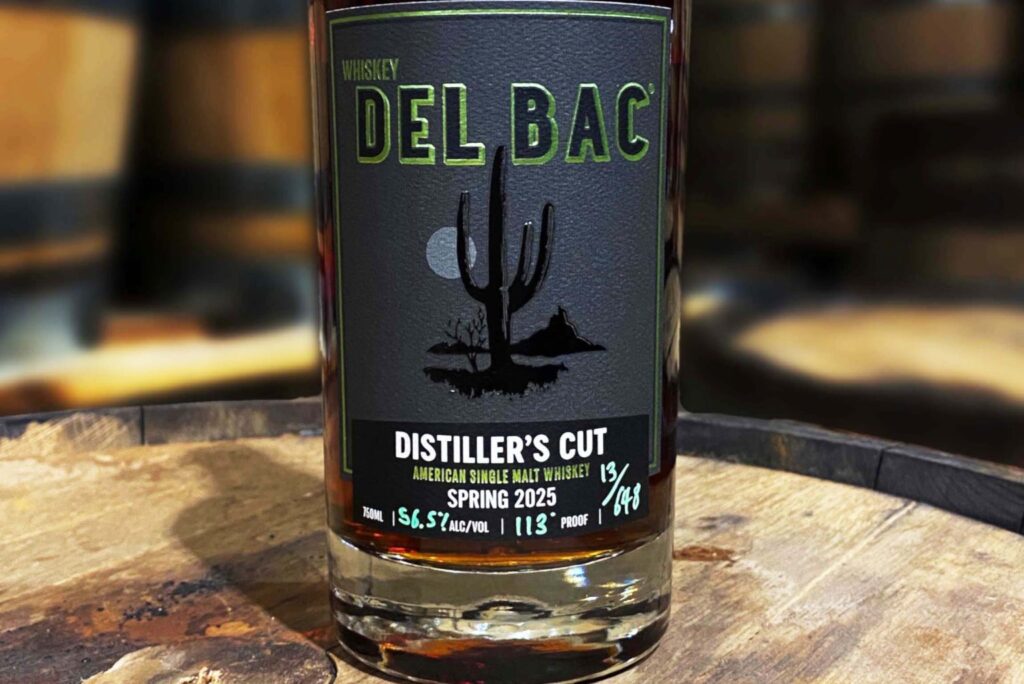
The Future of American Single Malt
With American Single Malt still establishing its identity, distilleries like Whiskey Del Bac are playing a crucial role in shaping its future. By blending traditional techniques with regional innovation, they are proving that this new category can stand alongside Scotch and bourbon in terms of quality and craftsmanship.
“One of the things that Whiskey Del Bac has always prided itself on is our belief in creating an American Single Malt that is of a very specific place and time,” said Vierthaler. “We’re riffing on the Scottish model, but breaking tradition by using mesquite smoke, narrower cuts, and smaller barrels. It takes the beauty of traditional whisky production methods and makes it distinctly Sonoran.”
While American Single Malt is still a niche within the whiskey world, Vierthaler sees its recognition growing, much like the resurgence of rye whiskey in recent years.
“The fact that more publications, influencers, distributors, and liquor stores are giving American Single Malt the attention it deserves means that consumers are thirsty for knowledge about the category,” he said. “For Whiskey Del Bac, it’s about continuing to create world-class spirits that are influenced and informed by their terroir.”
The “E” in Whiskey: A Distinctly American Choice
When it comes to spelling, Whiskey Del Bac follows American tradition, using the “e” in whiskey.
“We’re an American whiskey distillery, so we use the ‘e,’” Vierthaler states simply.
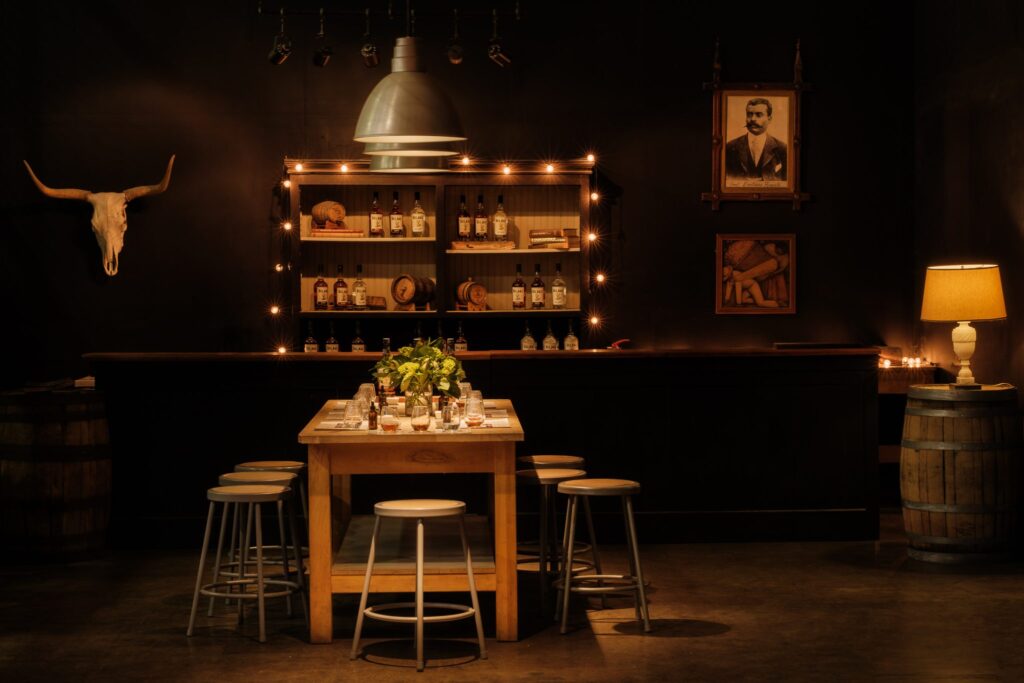
Conclusion
As the American Single Malt category continues to evolve, Whiskey Del Bac is proving that innovation and tradition can coexist in perfect harmony. By embracing the Sonoran Desert’s influence, they are crafting whiskeys that not only showcase the uniqueness of the Southwest but also contribute to the growing recognition of American Single Malt on the global stage. With their dedication to quality, terroir, and innovation, Whiskey Del Bac is helping to define what American Single Malt can – and should – be.

